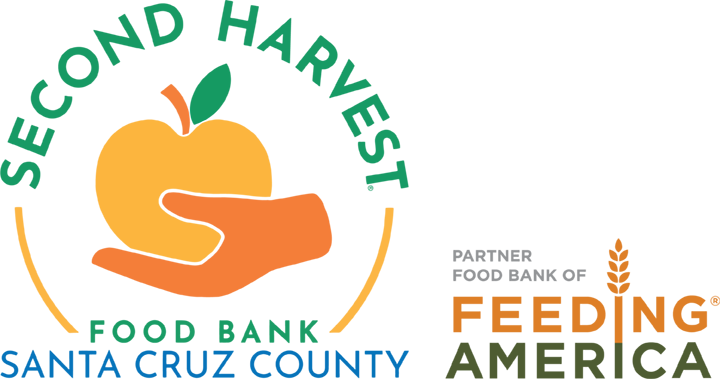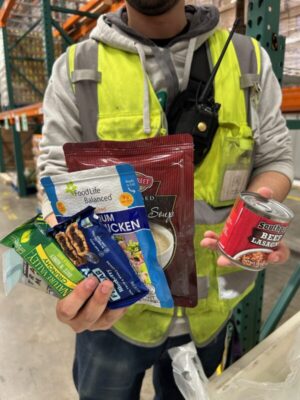Excerpt from Santa Cruz Sentinel
by Tara Fatemi Walker
As Pride Month ends for this year, we look to a social service agency, Second Harvest Food Bank, to see how it operates with a principle of inclusion.
Cameron Haste, Executive Vice President/COO at Bay Federal Credit Union, became Second Harvest Board Chair in February. He is a member of the LGBTQ+ community. “I understand the importance of seeing oneself represented and the impact that inclusivity can have on a person’s sense of belonging and dignity,” says Haste. “This drives my efforts to ensure that our programs and services are accessible and welcoming to all, regardless of their background or identity.”
Haste hopes to contribute to a culture of acceptance and understanding. “It’s important for others to see that leaders in their community come from diverse backgrounds and that their experiences and perspectives are valued and essential in driving positive change,” he says.
Second Harvest created Diversity, Equity, Inclusion, and Belonging (DEIB) initiatives, a cornerstone of its strategic plan which is designed to create a thriving community where everyone has access to nutritious food to support health and well-being. This involves efforts including developing strategies to serve everyone experiencing food insecurity in Santa Cruz County, ensuring the agency and program food distributions eliminate stigma and respond to our community’s diverse needs, and engaging in public policies and community collaborations to address systemic root causes of food insecurity—such as racism and poverty.
The Board and Staff DEIB Working Group, led by Second Harvest CEO Erica Padilla-Chavez, is building a framework to integrate multiple perspectives into the mission and vision. “Listening to the community helps us tailor our services to be more effective and impactful,” says Padilla-Chavez.
“Hunger affects individuals and families from all walks of life,” says Haste. “It’s my honor to lead a talented and devoted Board of Directors. Their diverse perspectives and shared commitment continually inspire me.”
Haste became a board member in 2021 after a shift as a Bay Federal volunteer at a Second Harvest food distribution. “Witnessing the profound gratitude of families receiving vital nourishment was a deeply impactful experience highlighting Second Harvest’s critical role in our community.” Through employee volunteerism, Bay Federal has partnered with The Food Bank for many years.
Second Harvest works hard to reach those in need, including low-income families, seniors, farmworkers, immigrants, and veterans. There are people of different sexual orientations and socio-economic statuses, and residents from throughout the county. Outreach includes drive-through community distributions, and programs for senior brown bags, disaster relief, and emergency food assistance.
In 2023, Second Harvest distributed 11 million pounds of food to Santa Cruz County individuals and families. The Food Bank isn’t just a fabulous food resource; it nourishes the local community in other ways. “To meet people’s changing needs and to help foster inclusion and equitable access for all, we have shifted our frame of reference and innovated in our work,” says Josue Barajas, Second Harvest Chief Programs Officer. “We provide more than food; we provide community, wraparound services, and a sense of belonging.”
Over the last four years, The Food Bank has taken considerable steps forward in inclusion. “We translated our mission, vision, and values into Spanish for the first time,” says Barajas. Recognizing that a large population we served was Spanish-speaking, we wanted to ensure they felt included and represented.” It also launched annual participant satisfaction surveys to learn clients’ likes and dislikes. In 2023, Second Harvest hosted roundtable discussions with legislators and CalFresh recipients to discuss safety net programs and what it would mean if they were cut. “This helped bridge learning gaps as we invited recipients to tell their stories. For many, this was their first meeting with a legislator. They felt empowered—their voices were being heard.”
Another recent project, Handy Access Packs, supports the unhoused community. Each bag has protein, veggies, fruit, and healthy snacks with pop-tops and pouches. People without kitchen access can eat them.
The Food Bank’s Farmworker/Campesinos Initiative Program started as an effort to help enroll people in CalFresh by visiting them in the fields. “After a few visits, we learned it would be more impactful if we took food to distribute,” says Barajas. “It became a wraparound service. Now, we partner with local farmers; they can come pick up food and take it back.”
The Food Bank’s success stems from a combination of factors including local, state, and federal advocacy efforts; cooking clubs where families learn about nutritious food; more than 3,000 volunteers; and 100-plus community distribution sites and partner agencies.
One community partnership is a Santa Cruz Bible Church food pantry. Miguel Aznar is pantry co-director for the popular Thursday farmers market style food distribution, where clients select what they want. Everyone is welcome.
“It draws people who want to help and do not need food. It draws people who want to help and also need food for themselves or their neighbors,” says Aznar. “Some unload cases of food from pallets onto tables, others need a chair to sit in line waiting for the distribution to start, all are respected.”
Coffee and snacks are available before the distribution begins; guests and volunteers can help themselves. “Many volunteers have been guests and still need food, but now contribute their muscle and creativity to improve how we operate,” says Aznar. In fact, Aznar first came to the distribution when he himself needed food assistance and has unique insights into clients’ experiences. Recently, a young man volunteered to help move heavy boxes during set-up. “At the end of our long day, I learned he’s unhoused when he balanced a box of food on the handlebars of his bicycle,” says Aznar. “It made sense of his being able to connect, earlier, with a woman camped behind the church, explaining where she could find better shelter and why she couldn’t stay there. It made sense of the foods he took and those he declined.”
The pantry offers dozens of foods across 14 tables. Guests feel comfortable because they choose what they need and what they want. “Vegetarian? With children? Without refrigeration or a can opener? With a hungry shut-in neighbor? We balance getting everyone as much food as we can without running out before the end of the line,” adds Aznar. The food distributed every Thursday feeds 450-500 people weekly.
Aznar cherishes the partnership with Second Harvest. “The Food Bank provides most of our food, thousands of pounds delivered by truck every Thursday morning, spanning dry lentils to fresh lettuce, cans of salmon, boxes of milk, and frozen cherries. Second Harvest representatives are passionate about the same thing we are: nourishing people. When we have challenges, they work with us, even visiting on-site to understand needs and imagine new ways to create the community we all want.”
Second Harvest Food Bank and its staff, partners, and volunteers are committed to alleviating food insecurity and are excited to continue accomplishing this while focusing on DEIB. One more example of this: the nonprofit’s new advisory council includes eight representatives: two from south county, two from mid-county, two from Santa Cruz, and two from San Lorenzo Valley. This council will be tasked with giving input on programming and food purchases and will support the development of the Food Bank’s newest strategic plan.

